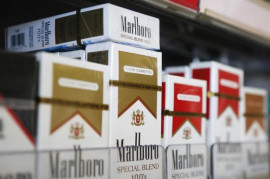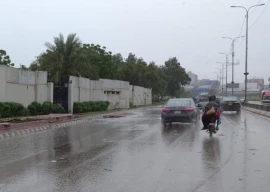
LAHORE:
Budget allocated for the education sector is not being completely utilised, said a report by the Institute of Social and Policy Sciences (I-SAPS) on Wednesday.
According to the report, the unutilised budget pointed towards a lack of mechanisms to fully spend the available resources.
Presenting the report, I-SAPS research fellow Abdullah Alam said that the education budget’s share in the total provincial budget (in terms of the total percentage) had decreased over the last three years.
“In 2013-14, 26 per cent of the provincial budget was allocated for education. This year, the allocation is 20 per cent of the budget,” he said.
He said that according to the study, the budget allocated for education was not being fully utilised over the years. “During the fiscal year of 2014-15, 18 per cent of the budget remained unutilised, pointing towards absorption issues in departments concerned,” he said.
Alam said that there had been a significant increase in funds allocated for development purposes in the education sector.
“However, during the last six years the amount spent has always been far less than that allocated. The highest difference between allocation and the amount spent was reported in 2012-13, when only 23 per cent of the allocated budget was spent,” he said.
In 2014-15, he said, that Rs9 billion was earmarked for development purposes in the education sector.
This was 15 per cent of the total budget. “However, only 46 per cent of the money was spent during the year,” he said.
He said for primary education, Rs2.5 billion – six per cent of total development budget – was allocated. Out of this only Rs190 million, 8 per cent of the budget, was spent during the year.
Standing Committee on Education chairman Qamarul Islam Raja said that the allocated amount was released later. “This is the reason for departments not being able to utilise all the funds allocated to them in a fiscal year,” he said.
He said overall education delivery had improved over the decade.
“Punjab now has the highest net primary enrolment rate, literacy rate and gender parity index (GPI) in Pakistan,” he said. He said that the primary focus of the government and other institutions should now be on the quality of education. “According to the Punjab Education Foundation (PEF), only 52 per cent students passed the grade 5 exam. More efforts are needed to improve the quality of the education system,” he said.
Raja said that the School Education Department (SED) had identified around 1,000 schools with the lowest results. “The PEF is now adopting these schools to improve the quality of education,” he said.
Pakistan Tehreek-i-Insaf (PTI) MPA Saadia Sohail Rana said that a lack of political will was responsible for the slow progress. “The government is only interested in projects that attract voters. Roads and bridges are a priority for the government,” she said. SED Deputy Secretary Qaiser Rasheed said that it was a misconception that education was not a priority.
“The SED is the largest department in the province with a budget of Rs267 billion,” he said.
Published in The Express Tribune, January 28th, 2016.













































COMMENTS (1)
Comments are moderated and generally will be posted if they are on-topic and not abusive.
For more information, please see our Comments FAQ